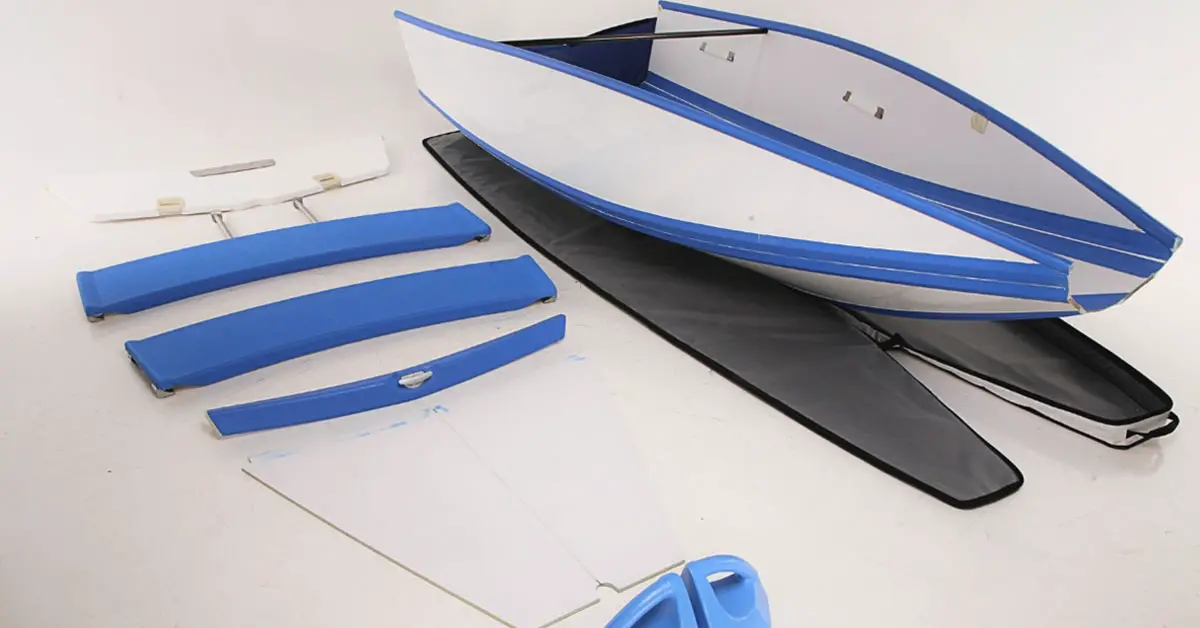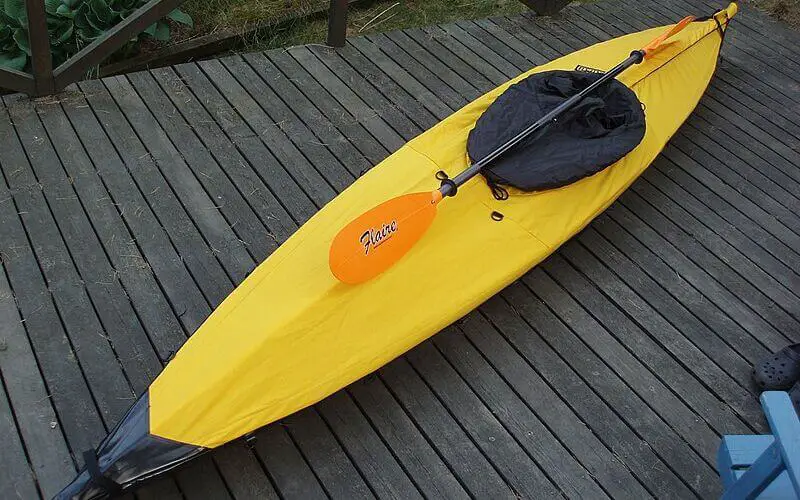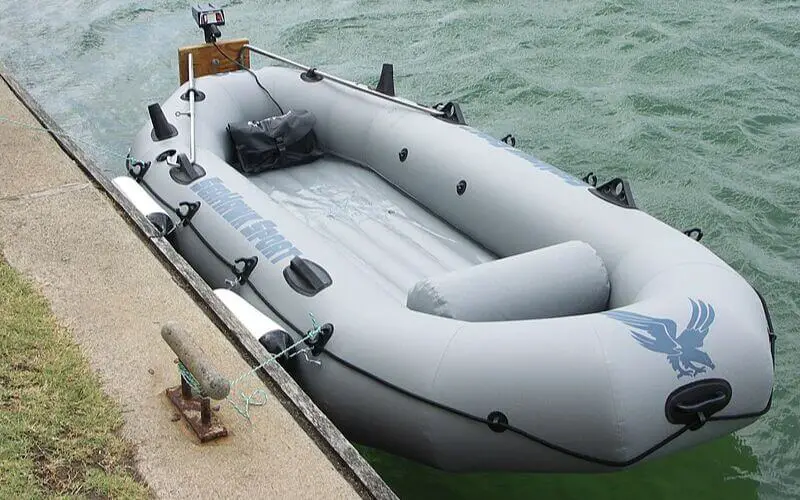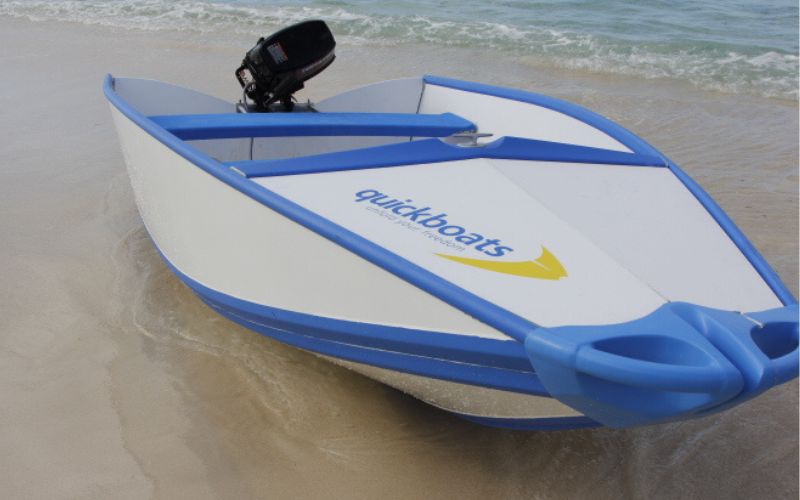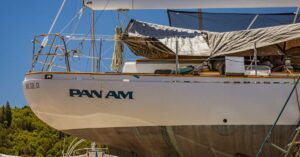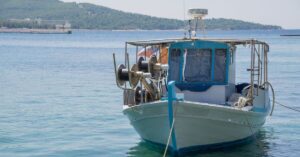Do you love the open waters but hate the hassle and expense of hauling a traditional boat around? What if we told you you could have the best of both worlds? Enter the foldable boat, a game-changing innovation in the boating world that offers the convenience and flexibility of a foldable design without sacrificing quality or durability on the water.
These crafts are either entirely inflatable, including the floor, or have removable rigid floor panels. Flooring can be made of wood, aluminum, composite or plastic. Inflatables can be rowed or powered by an outboard.
In this article, we’ll explore the benefits of foldable boats, the different types available, and how they’re shaking up the boating industry. So sit back, relax, and prepare to be amazed by the world of foldable boats!
What is a Foldable Boat?
A foldable boat, also known as a folding boat, is a type of boat that is designed to be easily collapsible and portable. Unlike traditional boats that are fixed structures, a foldable boat can be folded or disassembled into smaller pieces.
These boats are typically made from lightweight materials such as aluminum or flexible materials like PVC or rubber. The foldable design allows for easy assembly and disassembly, making it ideal for those who want to enjoy boating without the hassle of a bulky boat.
Foldable boats come in various shapes and sizes, with some models even featuring additional features like inflatable keels, deck cabins, or square sails.
They are versatile and can be used for various water activities such as fishing, recreational boating, or even as a tender for larger vessels. Foldable boats offer a practical and convenient solution for boating enthusiasts who value portability and ease of storage.
Some folding boats even have sailing versions, allowing enthusiasts to harness the wind for propulsion. These boats, often with folding masts and lateen sails, offer a unique and exhilarating sailing experience.
The concept of foldable boats can be traced back to the late 19th century when Mellard Treleaven Reade developed the first design. He recognized the need for a portable and lightweight boat that could be easily transported and assembled. Since then, foldable boats have come a long way in design and materials, but they still offer the same convenience and functionality Reade envisioned.
Types of foldable boats
When exploring the waterways, foldable boats offer a convenient and versatile solution. They come in various types, including folding kayaks and folding canoes, each with unique features.
Folding Kayaks
Adventure lovers continually gravitate towards folding kayaks and for good reasons too. Characterized by their compactness, these kayaks provide a seamless setup process – an attribute that always comes in handy when you’re outdoors!
Folding kayaks are commonly built with a durable yet lightweight wooden or aluminum frame. This combination of materials ensures the optimal balance of strength and weight.
Further consolidating their lightweight features, these kayaks also sport a hull usually constructed of PVC or waterproof fabric. This innovative design reduces the weight and amplifies the durability, allowing the kayaks to withstand various water conditions over a long period.
Designed specifically for solo paddling, these kayaks provide incredible maneuverability. Whether navigating calm waters or tackling rough currents, you’ll find that folding kayaks deliver an impressive level of control and responsiveness – perfect for any thrilling water expedition!
Our Recommended Foldable Kayak, Oru Kayak Foldable.
Folding Canoes
For those who prefer embarking on group water adventures, look no further than folding canoes, a larger and more spacious alternative to folding kayaks. These are perfect for recreational excursions, family trips, or any get-together that requires a collective water expedition.
Folding canoes provide seating for two or more people, offering ample room for participants and their gear. So whether it’s a shared paddle with a friend or a full-family outing, these canoes cater to your group’s needs by providing the space and comfort for an enjoyable paddle.
Regarding design, folding canoes are remarkably similar to their smaller counterparts – the folding kayaks. These canoes feature a sturdy frame from resilient materials such as wood or aluminum. This solid frame provides the backbone needed for the canoe, contributing to its structural integrity and longevity.
One of the standout features of folding canoes is their hull, frequently made from PVC or waterproof fabric. This unique design promotes excellent water stability, making it easier for less experienced paddlers to maintain balance and control and offering a robust and secure ride for everyone on board.
Our Recommended Folding Canoe, MYCANOE 2022 Duo Origami Folding Portable Canoe.
Inflatable Rafting Boat
Inflatable rafting boats have become the talk of the boating world due to their astonishing versatility and wide range of potential uses. From recreational activities to professional applications, these watercraft make waves with adaptability and practical design.
At the heart of this revolution lies the innovative construction of these boats. Inflatable boats are made from lightweight and flexible materials designed to be inflated with air or gas. This unique composition ensures that the boats remain buoyant and capable of handling various water conditions while retaining their portability and ease of storage.
One of the key attractions of inflatable boats is the sheer variety of sizes available. Choices range from small, personal watercraft for solo adventures to larger vessels that accommodate multiple passengers for group outings or professional operations. When selecting an inflatable boat, consider the size best suits your requirements and preferences.
Another enticing feature of inflatable boats is their compatibility with different motors, allowing for a customizable boating experience. Users can power their boats with electric or outboard motors, granting them increased control over their vessel’s performance and capabilities.
Our Recommended Inflatable Rafting Boat, BRIS 10.8 ft Inflatable Boat.
Design and Construction of Folding Boats
Foldable boats have witnessed considerable advancements in recent years, bringing about durability, user-friendliness, and multi-functionality improvements. Their designs incorporate flexible materials allowing for easy folding into a compact size, a feature highly advantageous for effortless transportation and storage.
Engineered with robust frames, these boats provide stability and maintain excellent structural integrity on water. Despite their sturdy build, assembly is generally simple and fast, often involving just a few steps for the complete setup.
Materials Used For Building Foldable Boats
Foldable boats strike a balance between convenience, portability, and practicality. Many of the materials used in their construction enhance durability and versatile usage. Polypropylene sheets, for instance, are appreciated for their weight, resilience, and adaptability.
Resistant to UV damage, saltwater, and physical impacts, this material can significantly increase the boat’s longevity even in harsh conditions.
Other options, including plywood, aluminum, PVC, and Hypalon, are integral to a foldable boat’s construction. With lightweight strength and rigidity, aluminum proves ideal for the frame and hull. Meanwhile, due to their robust yet adaptable nature, PVC and Hypalon are usually employed for inflatable parts.
Engineers have started incorporating advanced composite materials like Kevlar, high-end glass, and foam cores in pursuit of improved stability, safety, and buoyancy. Thus, whether a boat prioritizes lightness for portability or robustness for rough waters, foldable boats aim to be reliable and versatile vessels.
The Benefits of Foldable Boat Design
Foldable boats, alternately called folding boats, offer many benefits that resonate strongly with boating enthusiasts. They stand out with their petite size, featherweight build, and effortless transportability.
One of the key advantages of foldable boat designs is their minimized space requirement when folded. Taking up significantly lesser space than traditional rigid boats, they are a handy solution for those with limited storage areas. They appeal equally to those aiming to sidestep expenses related to conventional boat storage facilities.
The lightweight character of foldable boats renders them extremely convenient to handle. They are often so lightly constructed that one or two people can easily carry most models, consequentially removing the need for additional lifting machinery. Once neatly packed, these boats comfortably fit into the trunk of a car, offering easy and efficient transportation to various water bodies.
Flexibility in use comes across as a noteworthy benefit of foldable boat design. These boats suit various applications, including fishing, recreational boating, or even sailing. This wide-ranging compatibility makes foldable boats an excellent choice for those who enjoy an array of water activities and are seeking a single, multipurpose boat to cater to their needs.
Essential Safety Features in Foldable Boat Design
Ensuring safety is of paramount importance while designing foldable boats. Attention to several key aspects can facilitate a safe and enjoyable boating experience.
Structural stability and durability take precedence in safety concerns. These boats need to handle the various forces they face while navigating through water. Designers typically employ robust yet lightweight construction materials such as strong alloys to achieve this.
Moreover, the crucial role of regular inspection and maintenance can’t be ignored as it helps unearth potential structural issues before they pose any safety risks.
Another aspect warranting critical focus is buoyancy. Foldable boats must retain sufficient buoyancy to stay afloat, even in challenging water conditions. The presence of designed flotation devices – air chambers, buoyancy tubes, or inflatable keels, ensures this. These features add a layer of stability and safety by preventing the boat from capsizing or going under.
Clear and concise guidelines for assembling and disassembling the boat are essential for avoiding any damage or accidents during operation. The user should be able to accurately assemble the boat. Ensuring that every element is securely in place and correctly aligned. Similarly, clear disassembly instructions are equally necessary to prevent accidental damage or injury.
Wrapping Up
Foldable boats are a remarkable innovation in the boating world, delivering immense convenience and portability for boating enthusiasts and adventurers alike. Their lightweight and compact design makes them exceptionally easy to transport and store.
Thanks to advancements in technology and materials, foldable boats have evolved dramatically in terms of durability, stability, and performance. They’ve proven practical and cost-effective, from fishing expeditions to leisurely boating jaunts or handling emergencies.
Their versatility and eco-friendly nature set them apart even further, making them an excellent choice for both experienced boaters and beginners.
Reference

